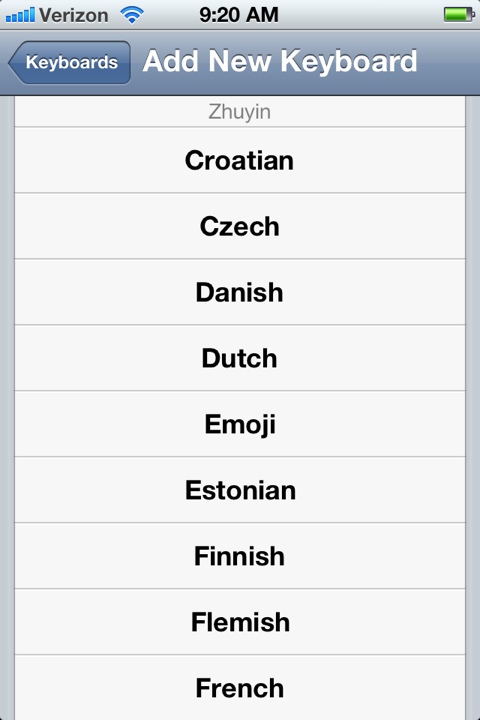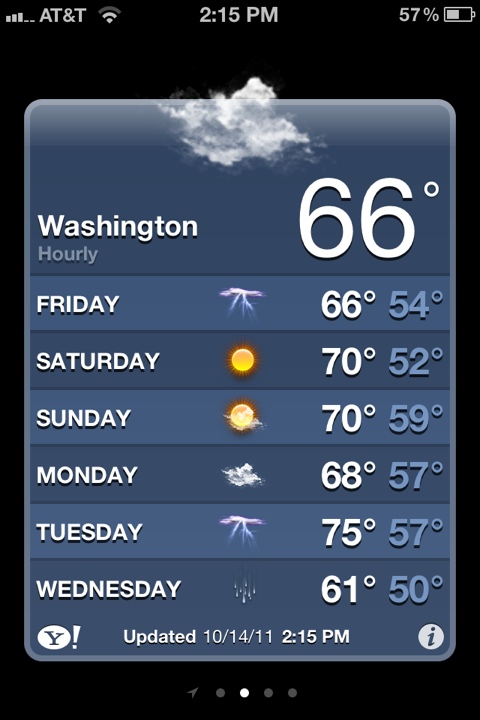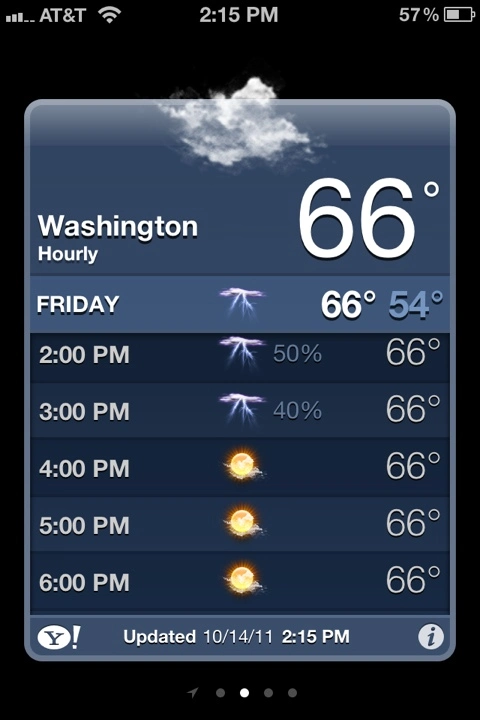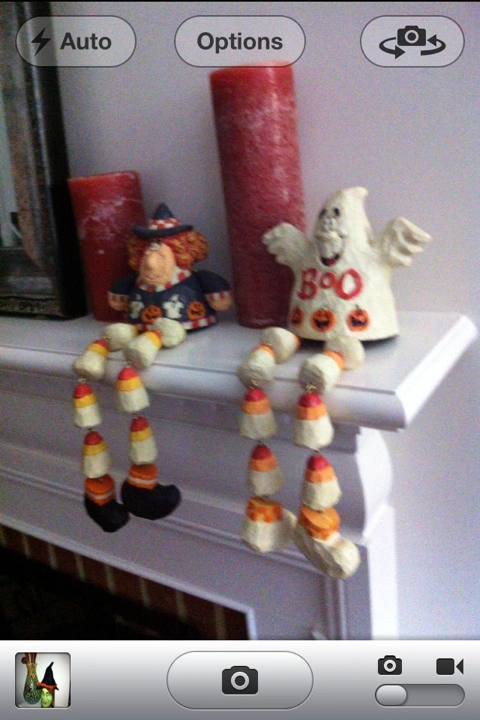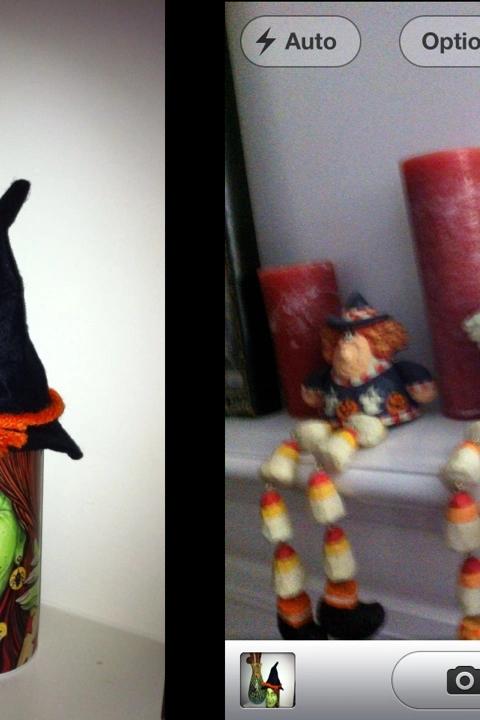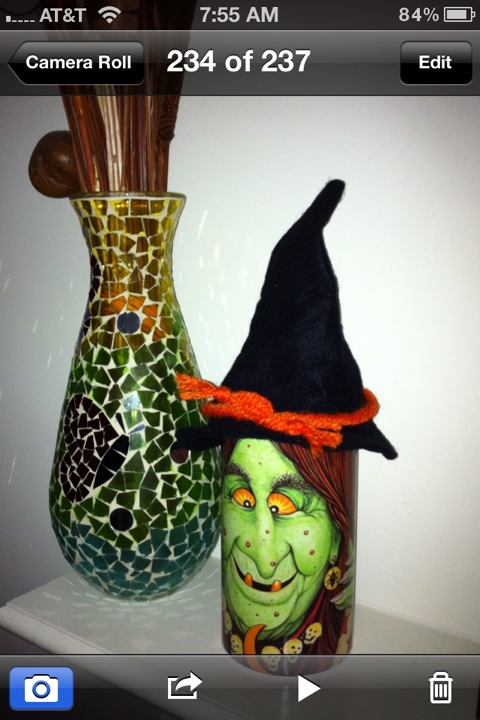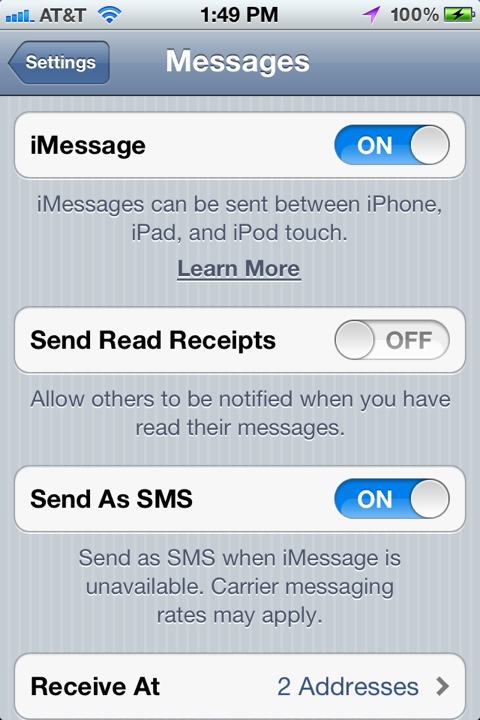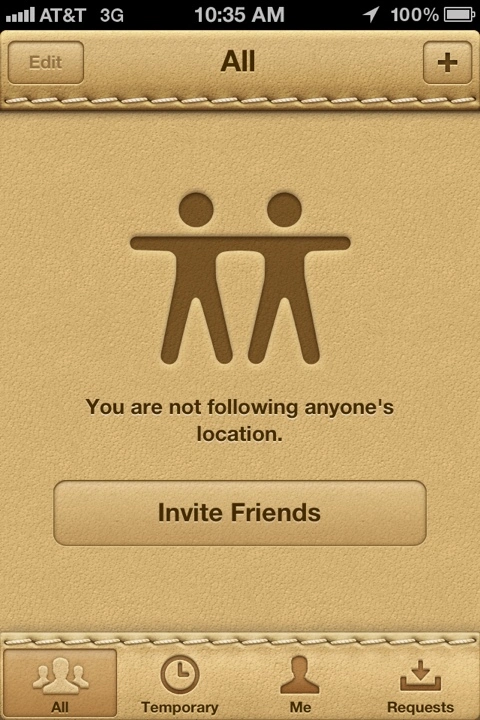Gmail inbox view now has direct buttons to view Amazon orders
August 12, 2013
Sometimes, shopping for school supplies can be so frustrating. Last Saturday, after hours of searching and visiting several stores, I got everything on my list except for a notebook page-sized map of the USA and world for my older daughter. So I ordered it this morning via Amazon, with a shipping time of 4-14 days.
Almost immediately (and as usual), a confirmation email from Amazon appeared in my Gmail inbox. With one important difference.
(Click on the image to see a larger size. Cuz I know squinting still won’t help you.)
The inbox view of Amazon’s confirmation email had a button labeled “View Order” with an arrow. I didn’t even have to open the email itself; all I needed to do was to click on the button itself and I’d be taken directly to Amazon’s website with the order details.
Opening the email itself made the button disappear, unless I returned to the inbox view.
Apparently, Google must have recently enabled this feature for Amazon, or perhaps Google is beta-testing this with a small pool of users. Has anybody else seen this feature, and is this only for Amazon or also for other selected retailers?
Believing in Magic
April 10, 2013
The Tooth Fairy was late.
Several mornings in a row, my older daughter checked under her pillow only to find her own note along with her own tooth. Finally, my daughter awoke one morning and found an apologetic note from the Fairy; it seemed the Fairy had been working in China for several days and was only just now able to pick up my daughter’s tooth.
My daughter proudly told this story to her friends in her 1st grade class. And two friends promptly told her that the Tooth Fairy was fake.
My daughter came home stunned and heartbroken. She asked my husband if the Tooth Fairy was a fake. In the time-honored tradition of all marriages, he told her to wait till Daddy came home. And he then frantically texted me.
Oh boy. I was dreading my older daughter’s questions. And I had to think fast, because I was just a few minutes away from home.
My daughter cornered me the second I got home. She made sure her younger sister wasn’t watching, and then asked, “Someone told me the Tooth Fairy is fake. Is that right?”
I gently motioned her to come upstairs with me. I led her to a closet and showed her a stack of envelopes and notes. Mouth agape, she looked at each note, all covered with her own handwriting and addressed to the Tooth Fairy. With a tooth still in each. Then she looked up at me with a stricken expression.
“You! You’re the Tooth Fairy?” she asked.
I nodded slowly.
“Why? Why lie to me,” she demanded.
“Because I helped you believe in magic for a while,” I began. “I grew up believing in magic, because of my mom and dad. They helped me believe in the Tooth Fairy. And when I stopped believing, my mom and dad asked me to pass the magic on to my children.”
“That’s what I did with you,” I continued. “I helped you believe in magic for a while. Now I want you to pass that on to your younger sister, and then to your own children. Will you do that? Will you help me pass the magic on?”
My daughter looked at me, and then slowly smiled. Then a great huge grin. And she said …
“SURE!”
Two hours later: “Daddy … Wait … What about Santa Claus?!” I winced, and told her to just keep believing in magic a bit longer.
Two years later: my younger daughter lost her first tooth. My older daughter helped her write a note to the Tooth Fairy, and assured her that the Tooth Fairy will indeed find her.
Thank you for passing the magic on, and for helping others believe in magic.
(And yes, the Tooth Fairy was on time. This time.)
An Emoji For Each State
March 28, 2013
What if an emoji could be assigned to each state? Some emoji are obviously associated with certain states: 🗽 (Statue of Liberty) for New York, and 🌉 (Golden Gate Bridge) for California.
Several other states don’t have such iconic emoji, but it was easy enough associating them with an unique emoji: 🚘 (car) for Michigan, and 🎰 (slot machine) for Nevada.
(I know, some of these emoji won’t be viewable on PCs and many non-Apple mobile devices. Allow me a moment to be smug.)
(Ok, smug moment over,)
Back to emoji.
(Yes, emoji is plural for emoji.)
ANYWAY.
I was able to add a few more states to the list after doing some research: where is the Football Hall of Fame? (Answer: Ohio, which gets the 🏈 emoji.) What about Thomas Alva Edison’s lab? (New Jersey, which is hereby awarded the 💡 emoji.) My Twitter followers also helpfully supplied me with a few more ideas.
I still have a few states not yet associated with their own emoji. That’s where I need your help: can you think up the “perfect emoji” for these missing states? Can you think of better emoji for those states already awarded with (ahem, weak) emoji?
Here’s the list of states with emoji I have thus far (with some alternatives as well). I’m starting to forget why some states have the emoji they do, so I’ve helpfully supplied answers at the bottom of this post.
❄ AK
🚌 AL
🌵 AZ
🌉 CA
🏂 CO (🗻)
📃 CT (✂)
🐼 DC
1⃣ DE
🚀 FL (🍊)
🍑 GA
🌋 HI
💎 ID
💨 IL
🏁 IN
🚜 KS
🏇 KY
🎭 LA
💪 MA (🔮)
♋ MD (🐢)
🌲 ME
🚘 MI
♈ MO
🌟 MN
💰 MT
✈ NC
🌽 NE
💡 NJ
🐍 NH
👽 NM
🎰 NV
🗽 NY
🏈 OH
🔜 OK
🌹 OR
🔔 PA
🌊 RI
🌴 SC
🗿 SD
🎸 TN
⛽ TX (🗼)
🐝 UT
🚬 VA
🍁 VT
☔ WA
🍺 WI
🗻 WV
🐎 WY (😈)
(Credit to @stevenhaddox for AZ, UT, and WY. And to awesome @katiecupcake for CT, ID, ME, MN, MT, RI, SD, VT, and WV. Thank you @shannoncooley for NC and SC. @Graystorm thought of the clever emoji for MA. Wish I could remember those who also contributed earlier.)
I still need emoji for these states. Any ideas?
AR
IA
MS
NE
ND
One thing: when I list state abbreviations in alphabetical order, do I still list MA before MD even though, alphabetically, Massachusetts follows Maryland? Hmf.
Another thing: I know DC isn’t a state. Humor me, please.
Lastly, a shout out to Lisa Bonchek Adams. She blogs about her experiences “living with metastatic breast cancer, grief & loss, life, and family.” I’ve shed tears reading her searingly honest and courageous posts, and in fact I haven’t finished (and couldn’t finish) reading one of them: The Hardest Conversation. My favorite of her posts so far is the stupid things people say to those with cancer and their families.
In spite of (or perhaps because) of living with cancer, she finds the time and energy to be a mother, wife, AND social media rock star. I follow her on Twitter (she’s @adamslisa) and love how she engages with her followers.
She blogs several times a week. I haven’t blogged in a year or more. WTF, Proud Geek!? Hence this post, hopefully the first of many more.
Thank you, Lisa, for being an inspiration to me.
Some select answers (after all, I don’t want to make this TOO easy for you!):
🚌 AL – Rosa Parks in Selma, AL
📃 CT – Constitution State. Or, Cut (✂)
🐼 DC – Pandas are the main exhibit at the National Zoo
🍑 GA – The Peach State
💎 ID – The Gem State
♋ MD – Horoscope sign for Cancer, which also means crabs. And MD is for Crab lovers.
🌲 ME – The Pine Tree State
🌟 MN – The North Star State
♈ MO – Saint Louis Rams football team.
🌽 NE – The Cornhusker State
💡 NJ – Thomas Edison (inventor of the light bulb)’s lab in NJ
🐍 NH – Don’t Tread on Me snake flag
👽 NM – Roswell aliens. Enough said?
🔜 OK – The Sooner State
🌹 OR – Portland Rose Garden / Festival
🌊 RI – Ocean State
🌴 SC – Palmetto State (and a palm tree on its flag)
🗿 SD – Hoping this looks enough like Mt. Rushmore to persuade you
💰 MT – The Treasure State
🐝 UT – The Beehive State
🗻 WV – The Mountain State
😈 WY – Devils Tower (featured in the Close Encounters of the Third Kind)
Inexpensive iPhone stand
May 18, 2012
Justice Redefined (or Predefined)
November 7, 2011
Ten years ago, I had the honor of being asked to speak at the 2001 Jewish Deaf Conference. I researched and wrote this speech on the Jewish concept of Justice, and to this day I consider this among the best speech I’ve ever given. I think I already posted this years ago, either here or on another (now defunct) blog – but I wanted to share this again.
As a side note: the English / Speech Communication professor I refer to twice in this speech passed away on Valentine’s Day, 2011. She was also a close friend and mentor. I miss her immensely. My uncle, who I also mention in this speech, passed away several years ago; I also miss him and still hold a great deal of admiration for him.
Here ’tis.
A Different Concept of Justice
Jewish Deaf Conference Speech
Delivered on August 15, 2001
When Debbie Sonnenthal and Steve Brenner asked me to be the co-keynote speaker, I felt a sense of panic over several things. How dare I speak to you, when many of you have lived much fuller lives than me? What could I tell you, that some of you haven’t heard already from me over and over again? How will I appear, speaking with Lee Meyerhoff Hendler, who’s well known through America and especially in the Jewish circles, and with whom I’m extremely flattered to share this opportunity? And, most of all, how could I stand here in front of my speech teacher from college, Barbara Boyd? She’s sitting right there. I feel like she’s grading me at this very moment. I feel her analyzing my poise, my stance, my signs, and my every word. At the end of this speech, I will have to ask her in private how I did.
Anyway, after I accepted the offer to be co-keynote speaker, I went to work thinking about what I could discuss with you. And I went home and had dinner and cleaned up the dishes, and thought some more. I wanted to talk to you about something that means much to me. And, suddenly, I began thinking about a story that my uncle David told me. He’s an Orthodox Rabbi, with a beard down to here, and who lives in Israel with his family. Struggling with his limited knowledge of sign, here’s the story he told me many years ago:
There was a successful lawyer who won all of his cases. He worked for a big private law firm, and he had all the money he needed. He had a big home in a nice part of town. He had a hard-working wife and three wonderful children. He had memberships to the best clubs in town, and his name was known all over town. It seemed as if he had gotten everything he wanted in life. Yet, he had this feeling, a feeling that something was missing. At first, this feeling was very small, but as this lawyer won more and more of his cases, this feeling grew and grew. Finally, this feeling that something was missing became so bothersome that he brought it up with his wife. Of course his wife took it personally, thinking he was criticizing her. ‘Not so,’ he assured her. ‘There’s something missing, and I think it has to do with what I do as part of my job.’ But, being so interwoven in his life, his wife could not help him with this.
So, he went to his boss, asking if she had ever experienced this feeling as if something was missing. His boss said, ‘What’s wrong? You’re our best attorney. How could there be something missing?’ So, getting no answers from his boss, the lawyer went to his old professor from college and asked why he felt something was missing. The professor told him, ‘You were my best student. I taught you well. How could you feel like there’s something missing?’ The lawyer asked his friends. They all told him, ‘What do you mean, there’s something missing from your life? You seem as if you do have everything. Just accept the fact that life is not perfect.’ The attorney knew that that was not the right answer, either. He even asked people on the street. And he couldn’t find the answer to exactly what was missing.
Finally, this lawyer went to see his rabbi. And the lawyer explained that he’d been feeling as if something has been missing from his life. The lawyer explained how successful he is, winning all his cases, having a wonderful wife and three wonderful children. He told the rabbi how he felt he had all these pluses in his life, and asked why he felt unbalanced, as if there was something important and vital that was missing from his life.
The rabbi smiled and said, ‘Ah, I think I see what is missing. You win all of your cases, no matter whether you know the person you are representing is right or not.’ The rabbi continued, ‘You constantly take one side or another, and you win that side in court. It appears that you do not work to make sure compromise is reached, only that you win for the side that had hired you. You’re left without a sense of balance. You’re left without a feeling of tzedek. You’re left without a feeling of justice.’ When the lawyer heard this simple word, justice, he knew that that was exactly what was missing from his life. He had kept winning his cases without regard to whether it was the right thing to do or not. Even though he worked within the justice system, he still felt unbalanced from his single-minded pursuit of winning just for the side by whom he was hired.
So, the attorney began weaving in justice throughout his life. He taught it to his children. He practiced it with his wife. And, he tried to work more toward justice at work rather than toward winning every single case. His co-workers noticed that the attorney took a different approach toward his cases. He began to encourage negotiation and mediation, and his reputation grew and he became more successful. But success was not what was important to this man anymore. Instead, he felt more balanced; he was now working toward incorporating more justice in his life.
Now, I suspect the wise character at the end of this story depends on who is telling this story — and since it was my uncle, this wise character was a rabbi. But the point of the story lingered in my mind — justice. A simple word, justice. But what is justice? When I think of justice, I thought of the blindfolded woman holding up a scale. I knew that represented a neutral justice system, free from outside influence. That still didn’t define just what justice is to me. I looked justice up in the dictionary, Merriam-Webster, and two of the entries on this says that justice is ‘the principle or ideal of just dealing or right action,’ and ‘conformity to this principle or ideal: righteousness.’ But, to me, those were just a bunch of fancy words that did not quite express just what justice is.
Digging deeper, I did some research on the Jewish concept of justice. I found out that the Jewish word for justice and righteousness, ‘tzedek,’ appears in the Torah 120 times. That shows that the Torah put a high emphasis on justice. I discovered that the ideal of tzedek was not that of the blindfolded woman holding up a scale, but more like a connection with and relationship with ourselves, with our family, and with society.
We are more familiar with ‘tzedekah,’ which means righteous giving in an attempt to help balance out the injustice elsewhere in society. A concept that is similar to tzedekah is ‘tikkun olam,’ or repairing the world through social justice. This repairing could happen through our own volunteerism and activism, or by things being set straight or put into order. Things being put into order. Something may have happened in the past, some injustice, which put things into disarray. The concept of tikkun olam made me think of what I have done to put things back in order. And I remembered something that I did that I think was perhaps my greatest tikkun olam without knowing it until later. Here’s the story.
My grandmother had always been very proud and supportive of me. But, when I told my grandmother I was planning on going to law school, she warned me it would be difficult, that I might fail, that I might not find a job. I was surprised at her response, when in the past she’d always been supportive. And I thought, maybe she’s afraid because I’m deaf; maybe she thinks law school is too difficult for a deaf person. In spite of her concerns, I went to law school, struggled, and got fair — not great — grades. Two months before graduation from law school, my grandmother asked me to sit down with her. She asked me if I knew my grandfather used to be an attorney.
I was amazed; I thought my grandfather was always a psychologist who studied under Carl Jung and then moved to Los Angeles to set up his practice. No so, explained my grandmother. She told me that my grandfather was an attorney in Germany before World War II. And then, in the 1930’s, Hitler declared that Jewish people could no longer practice as attorneys in Germany. My grandfather could no longer work as an attorney, and so he studied to be a psychologist. He was later put in concentration camp, for several months, before he got out with his family on a visa to England and then to the United States. I had never known that he was an attorney, and I was stunned by the news. It was because I was Jewish and going into law school that she was afraid for me, not because I was deaf.
Two months later, on my law school graduation day, the most precious gift I received was from my grandmother. She gave me my grandfather’s 1930’s diploma from law school. I was so moved by this gift that I cried. From this gift, I knew my grandmother was saying two things. First, that she was very proud of me for finishing law school. And, two, that she considered what I had just done to be my attempt at tikkun olam to balance out the injustice that was done to my grandfather by Nazi Germany. By graduating from law school, I had done my part to put things into order, to correct the injustice done to my grandfather 60 years before.
So, after remembering my grandfather’s law degree, I began to understand a little more just what justice is. It’s not just deciding what is right and what is not right. To me, the Jewish concept of tzedek — a connection with and responsibility for other people, was what really defined justice. It meant doing tikkun olam, or repair of the world.
Here’s another story that shows how justice is not just neutrally deciding on the right thing, but also involves working toward responsibility and repair. Many, many years ago in Italy, back before the Roman Empire, in a small town named Atri, a king set up a great bell with a rope hanging from it. He declared that any person feeling he or she has been wronged should just ring this bell, and a group of wise men will assemble and decide on what justice should be done. For many years, people came and went, pulling on the rope and ringing this bell, and the wise men of the town of Atri would hand out justice. After many more years, the rope hanging from the bell withered away, and a farmer attached vines to the bell so that people could still ring the bell.
In that town, there lived a soldier who used to love hunting with his many horses and his dogs. However, as the soldier became older, he loved gold more and more. He sold off all his dogs and all of his horses except for his favorite horse. However, the soldier did not want to spend money and effort to keep his favorite horse in a stable and feed him. So, the soldier just let the horse wander around, becoming thinner and thinner while the soldier stayed in his home planning how to save his gold.
One hot afternoon, after being chased by dogs and being stung by thorns, the horse hid behind the thick vine leading up to the bell. Being famished, the horse began to tug at the vine to eat it. The bell rang, again and again! Because it was a hot day, the people of the entire town were at their homes, asleep, but when the bell rang, they all woke up and ran to see who was ringing the bell. The wise men immediately recognized this poor, starving horse and knew he was the soldier’s horse. And they all agreed that the poor horse was starving for justice. They called the soldier up, and asked why the soldier had neglected his horse. The soldier made excuses, and he thought the whole thing was a joke.
The wise men conferred with themselves, and then declared with grave faces, ‘This horse had served you, the soldier, well in youth. And so you shall serve him well in his old age.’ They then ordered the soldier to provide food and shelter for the horse for as long as the horse lived. And the soldier, being very embarrassed, did just that.
Remember when I told you my speech professor is sitting right there? She was also my English literature professor. I’m certain she was waiting for me to throw in some reference to a poem or literature. Barbara Boyd, I’m sure you’d be happy to know that this is from Henry Wadsworth Longfellow’s poem, ‘The Bell of Atri.’
But I didn’t tell you this story just to make my former professor happy. To me, this story shows how we work toward repair of the world, toward balancing out injustice elsewhere. I understand that without justice, without tzedek, I would feel like something is missing from my life. Just like the attorney in my wise uncle’s story, or the horse without food and shelter. Every day, as I work as an attorney at the Department of Justice, working with civil rights, I try to keep a sense of tzedek, and of how my relationship with others affect them.
I think I have said enough. Go out and work for tikkun olam. Keep tzedek, justice, in your heart and in what you do.
iOS 5 Tip: Enable Emojis
October 24, 2011
All iDevices have their own Emojis – you know, not only the smiley faces but also dozens of other mini-icons / emoticons of dancing women, food dishes, cars and trucks, and much more.
What many people don’t realize is that it’s now relatively easy to enable Emojis without having to download an app.
Here’s how.
First, on your iPhone, iPod, or iPad, go to Settings / General / Keyboard and then tap on “International Keyboards.”

Next, tap on “Add New Keyboards …”

You’ll see a list of keyboards of different languages. Scroll down to “Emoji” and select it. (I know, I know, Emoji isn’t a language. Humor me here, please.)
You’ll be taken back to the Keyboards screen, where you should see the Emoji keyboard listed.
Now go to any app that involves typing – say, Mail or Messages. When you see the keyboard, you’ll see a world icon between the numbers key and the space bar (or mic, if you’re lucky enough to have an iPhone 4S).
Tapping the world icon key will switch keyboards – and if you only have two keyboards enabled then it’d switch directly to the Emoji keyboard.
You’ll notice that the Emoji keyboard has several tabs. Each tab has several pages – you only need to swipe the Emojis to see the next or previous page. The first tab lists the Emojis you most recently used, and the second tab is actually the “default” with the typical smiley faces and a great deal more. The rest of the tabs are for household / office stuff, nature, transportation, and other stuff.
Go swipe and have fun! :)
UPDATE: These Emoji can only be viewed on iDevices like iPads, iTouches, and iPhones. They show up as gibberish on other devices and on the computer. In addition, they might not be accessible for people who are blind or have low vision. Heck, they’re hard for me to see — I’m too close to being middle-aged for my own comfort … So, keep these in mind when using Emojis with friends, family, your audience, or your enemies.
iOS 5 Tip: Weather App’s Hourly View
October 14, 2011
iOS 5 Tip: Swipe Camera to see Photo Roll
October 14, 2011
A very cool, mostly overlooked feature introduced by iOS 5 is the ability to quickly see your photo roll within the camera app by just swiping right on top of the camera view.
That’s right. Take a picture then swipe right. You’ll them see your most recent photo. Swipe right again to view progressively older photos, or swipe left at the last photo to return to camera view.
I know, the photo roll icon is right there – but c’mon, this is cooler. Seems to work only within the camera app itself and not when other apps use the camera.
(And yes, I’m blatantly using the screenshots to show off my Halloween decor.)
iOS 5 Tip: Enable iMessage’s Read Receipt Feature
October 12, 2011
iOS 5’s iMessage feature allows you to see whether the other person using an i-device (also with iOS 5) has received or even read your message. Heck, it even shows you whether the other person is typing!
However, the read / typing feature is turned off as default, and you’d only be able to see if your message was delivered.
To turn this feature on, simply go to Setting / Messages and turn on the “Send Read Receipts” option.


